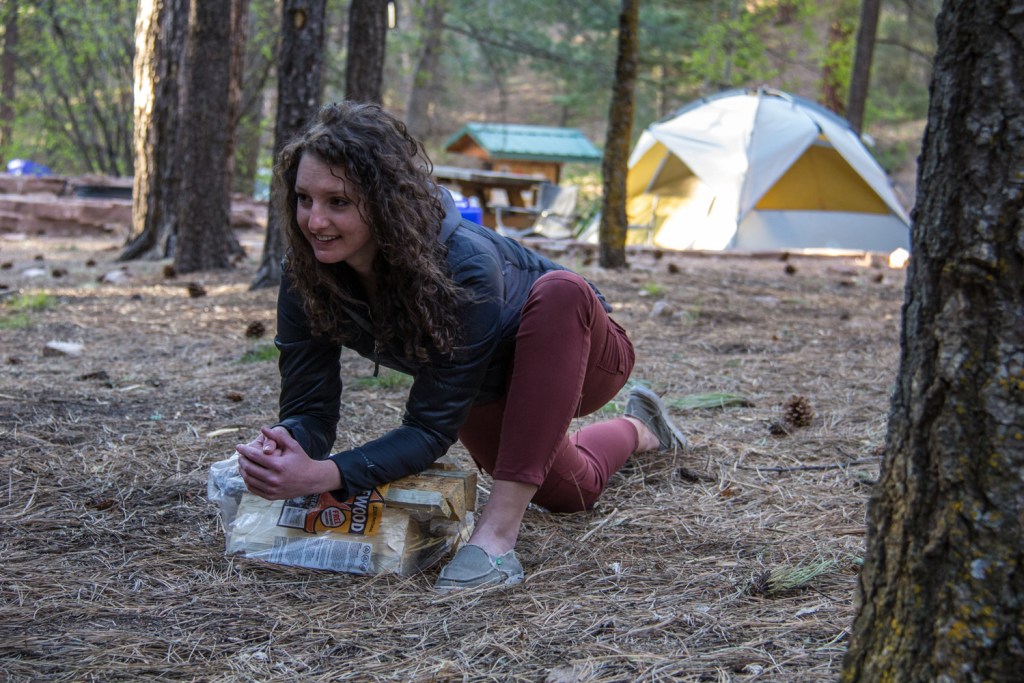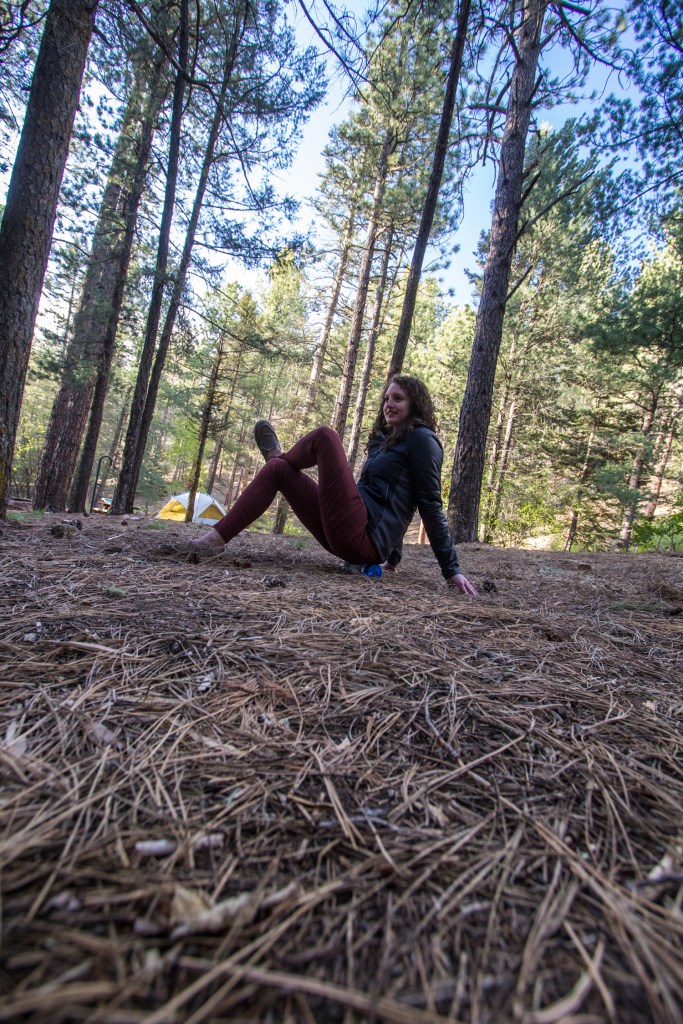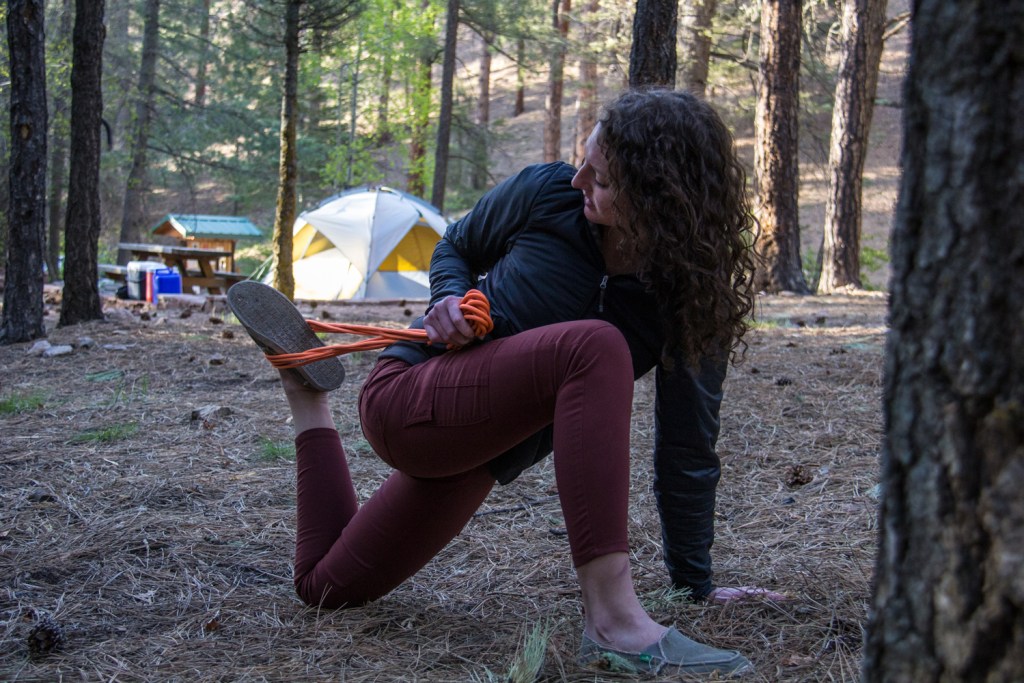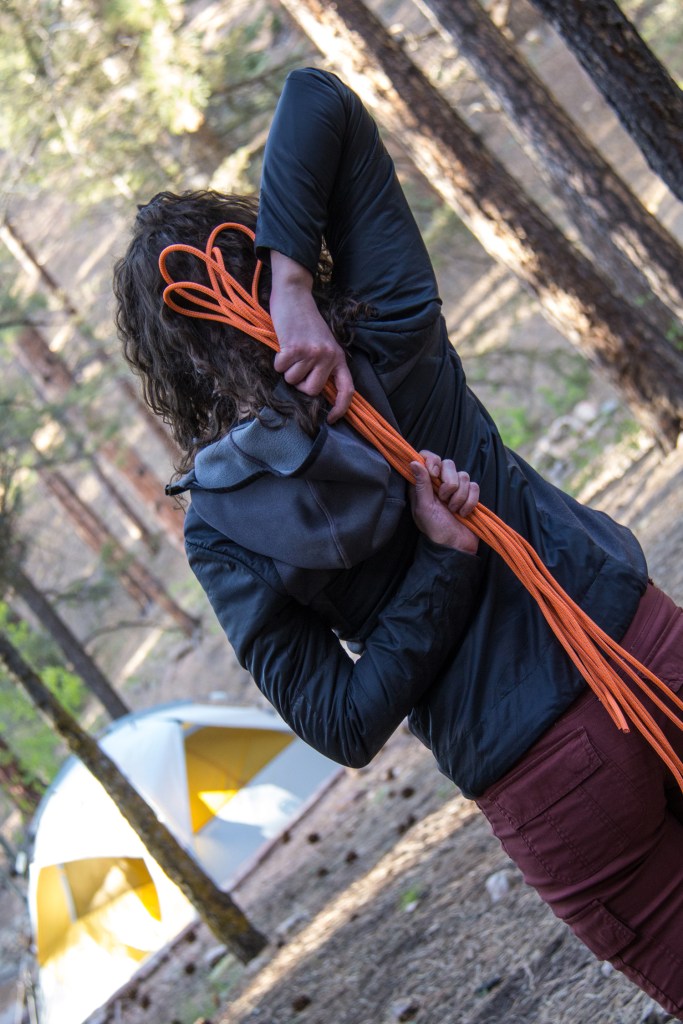Spending time in the great outdoors can take its toll on your body, especially if your normal activities include logging long miles with a pack, riding a bike across rugged terrain, or sleeping on the ground.
Last summer, my body had had enough. I’m only in my late twenties, but the constant camping and mountain biking interspersed with minimal amounts of stretching had taken its toll. I was sitting around a campfire on a chilly, early-summer night in the Rockies. When I stood up to get another beer, my knee completely seized. I could barely make it to the cooler. Then a few weeks later, I tweaked my back while downhill mountain biking–a kink that left me in constant, aching pain for the rest of the season. The next few months were costly. I was constantly in the sports therapist’s office for muscle work to release the stress points and knots that had caused all of my problems. Problems that, as it turned out, could’ve been avoided altogether.
I learned an important lesson that summer. Taking care of yourself every day—especially while you’re in the great outdoors—will help prevent major issues down the road. Here’s how to work some self care into your camping routine to make sure you don’t wind up like me.
Make the Campground Your Yoga Mat
Ease into things with some gentle stretches. Car rides and camp chairs are terrible culprits of causing tightness in the hip flexors while you’re camping, and these directly impact your lower back. Get into a “runner’s lunge” to stretch the front of your hips, either by propping yourself up on your hands or on a raised surface like a bundle of campfire wood. Hold for approximately a half-minute longer than you’d like to. Counter each side with a hamstring stretch by straightening your forward leg out in front of you and leaning back with your hips.
Roll Out on a Water Bottle

If you haven’t brought a foam roller along on your camping trip, don’t worry. Water bottles and thermoses make great stand-ins. Use the bottle to massage out tight quads and calves after a day of hiking, trail running or mountain biking. When you find a particularly tight spot, hold until you feel it begin to release. Go gently! Whatever heavy-duty plastic or stainless-steel item you’re using will be a lot less forgiving than your at-home roller. For a guide to finding a dedicated roller, look here.
Have a Ball, Literally
Throw a tennis ball into your camp gear to always have handy for smaller areas that your foam roller can’t reach. These work incredible well for massaging in between your shoulders and can help alleviate knots caused by backpacking or climbing or just sleeping on the ground in general. As with the roller, hold pressure directly on a knot for up to two minutes in order for it to fully release. A tennis ball is also my favorite way to knead out tightness in the hamstrings (another suspect when it comes to low-back pain) while eating breakfast at a picnic table or while driving home. Feel free to use other round objects, but I’ve found that something with a bit of “give” works best.
Put Your Paracord to Use

Yoga straps exist for a reason; not all of us can touch our toes, especially after two nights in a tent. But you’ve got no excuses for not stretching when a tent string, climbing rope or piece of emergency paracord are already packed in with your camping gear. Use one of the above to reach your leg in a gentle quad release while in runner’s lunge, for connecting your hands behind your back in a shoulder stretch, or literally to reach your toes in a forward bend to keep your hamstrings limber.
Taking as few as five minutes in the morning at camp can make the different between enjoying a healthy, active weekend or spending the next two months icing your back. If you’re anything like me, you’ll make the five minutes a part of your everyday routine.
At home? Learn how to use foam rollers from the experts at REI.
